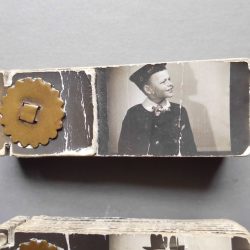In January 2020, I had the opportunity to meet and visit IJsbrand Rogge, a 91-year old filmmaker and collector based in Amsterdam. Mr. Rogge owns an original Kinora motion picture camera as part of his special collection of unique film historical objects. On the occasion, Mr. Rogge generously demonstrated the Kinora camera to me.
IJsbrand Rogge owns an amazing collection of unique film historical objects, including a Lumiere Cinematograph, a Biokam, Chrono de Poche, and a Japanese 26mm Refcy paper film projector, among many more rare devices in cinema history.[1] The Kinora camera, Rogge explains, is a very special object as well. This model dates from 1910-1911 and not many of these cameras were made. Only a few of them are left today. The Kinora camera takes 40 feet of 1 inch unperforated light-sensitive paper or celluloid film, corresponding to 640 pictures in total. After exposure, the film was processed by the Bond Ltd. company in London, which also produced the Kinora reels that could be viewed in the Kinora viewer.
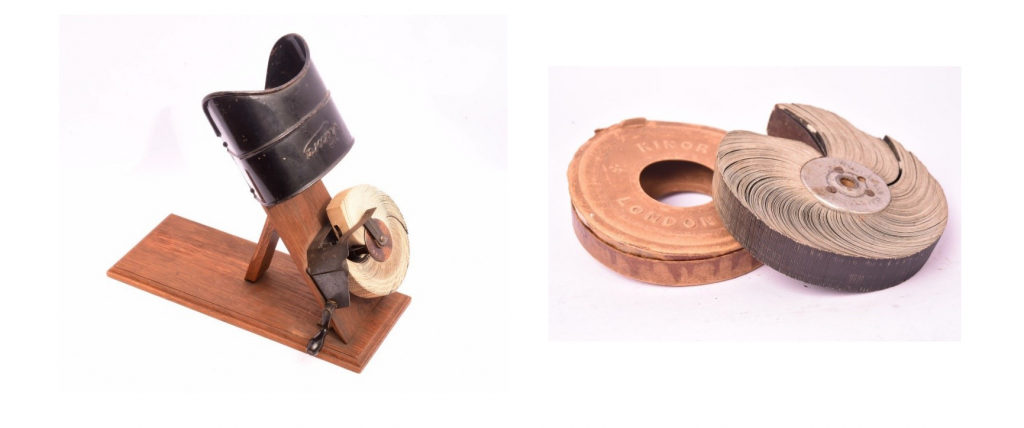
How the Kinora camera works
Like most moving image technologies of the time, the Kinora camera is a hand-driven camera. In the book Moving Pictures: How They are Made and Worked from 1914, the film historian Frederick A. Talbot explains how the camera’s mechanism worked:
“The mechanism of the [Kinora] camera is very simple. The sensitised ribbon is placed in a circular spool box and then is threaded through the film-gate and the intermittent gar, to be taken finally in a second circular spool-box. The intermittent gear differs entirely from that in the ordinary camera, which works upon a claw or finger system with the film running over sprockets . In the Kinora camera below the gate there are two eccentric rollers, mounted side by side, acting in the same way as the rollers of the domestic mangle. These rollers are split at one point through their entire length, and when these two edges, rotating synchronously but in opposite directions, come together and in contact with the film, which is fed between them, they grip and pull it down the depth of one picture. It may be pointed out that a similar movement was adopted in the very earliest cinematograph cameras built by Greene and other experimenters, in order to secure the requisite intermittent motion. Their imperfection was the uncertain motion of the rollers; but in the Kinora camera this defect has been completely overcome. The apparatus can be used either with a paper negative or the celluloid film.”[2]
Some pictures of the mechanism of the Kinora camera:
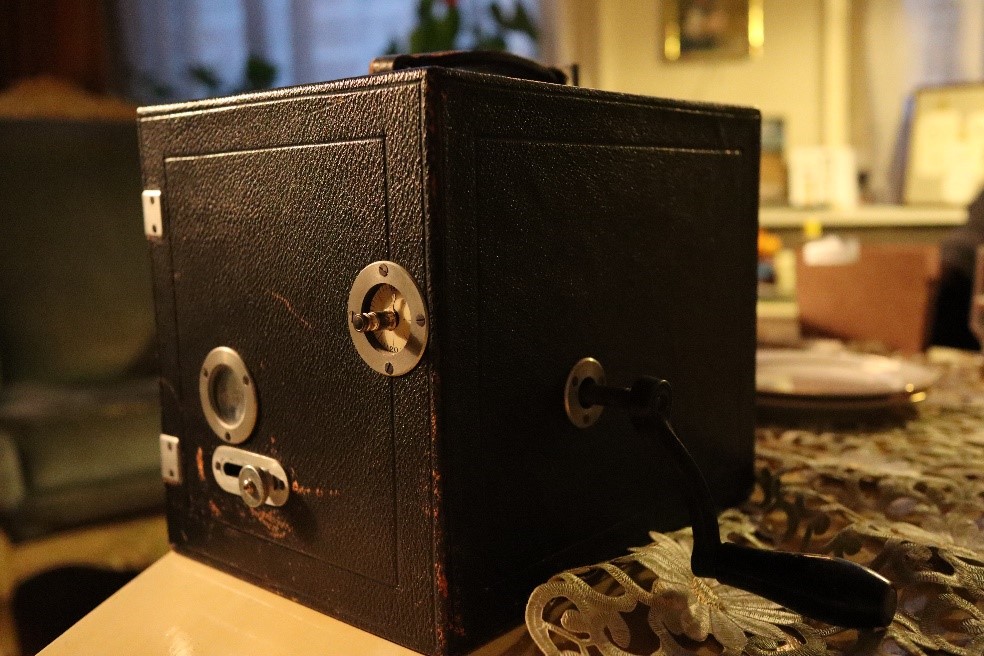

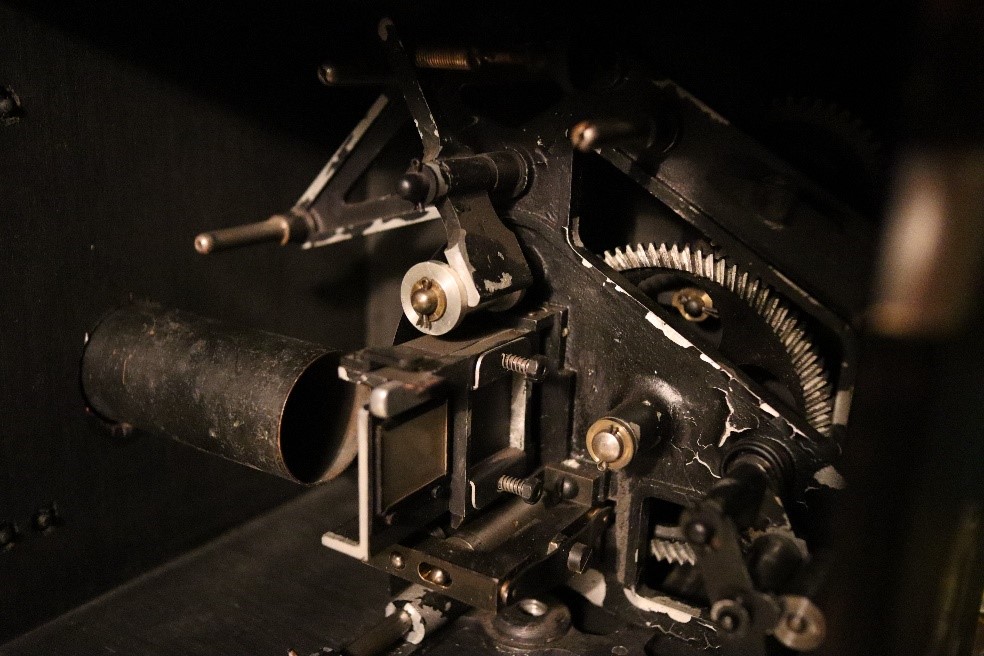
During my visit, I was lucky to hold the Kinora camera myself and study the camera’s internal mechanism closely.
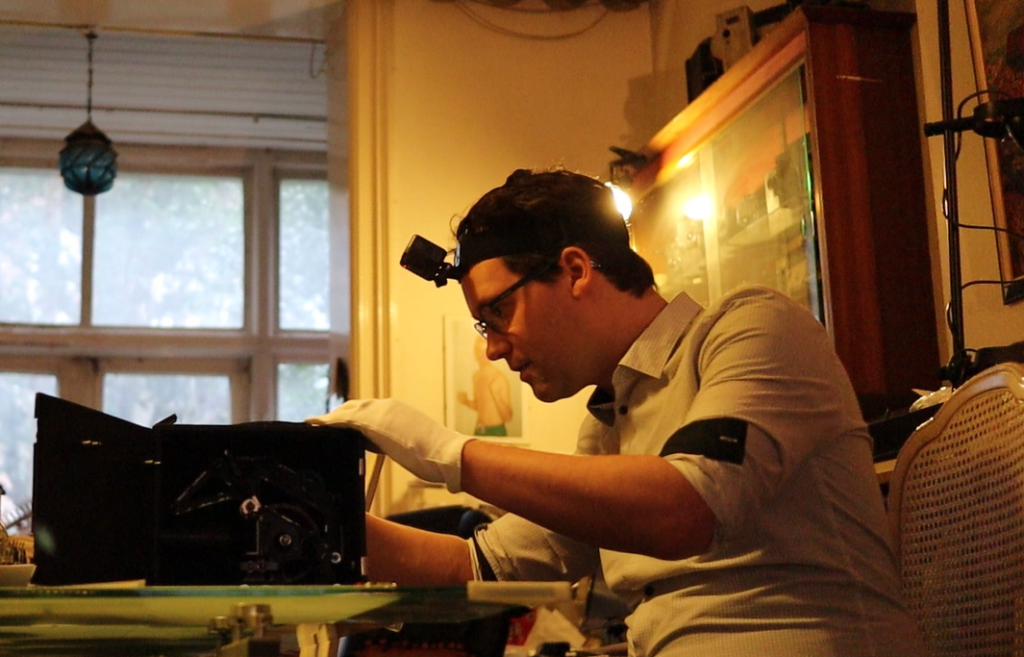
As part of my research within the DEMA project, I am planning to make a replica of the Kinora camera to further explore how the camera used to work and how it was used in the past. For making this replica, I am collaborating with the National Science and Media Museum in Bradford, UK. They also have a Kinora camera in their collection.[3]
YouTube channel
Besides a collector of film historical objects, Mr. Rogge is well-known for his popular YouTube channel. As a filmmaker, he uniquely captured everyday life of the 1950s and 1960s in Amsterdam, Japan and Hongkong, among other places. On his YouTube channel, clips from these films can be seen. The channel attracts an audience of more than 50.000 visitors per day!
I would like to thank Mr. Rogge for his generous demonstration of the Kinora camera and for showing me the special film historical objects from his extraordinary collection.
Notes
[1] On Mr. Rogge’s personal website, there is an overview of all the film historical objects of his collection: https://wichm.home.xs4all.nl/cinimage.html.
[2] Frederick A. Talbot, Moving Pictures: How They Are Made and Worked (Philadelphia : J. B. Lippincott Co., 1914), 302–3, http://archive.org/details/movingpicturesho00talb.
[3] https://collection.sciencemuseumgroup.org.uk/objects/co8085522/kinora-camera-cine-camera.



